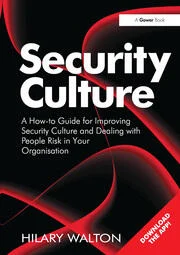Sometimes finding the solution to a security problem is about changing how you look at it. This can be a challenge, particularly if the problem is costly or is a significant safety threat. Our first reaction may be to find the most familiar or simplest way to make an immediate impact on the issue. But true security leadership requires us to stop and think about the problem through the eyes of the business and its goals, and to change our tactics based on what we see. One good example of this is how companies have dealt with the problem of theft of copper and other valuable metals.
Metal theft has proliferated over the years, and with the steady increase in commodity prices, it is expected to continue in frequency, causing significant financial loss. These thefts have a deleterious effect on the quality of life in local communities. Copper water pipes, electrical lines, telecommunication, and other critical infrastructure support the lives and daily activities of everyone. Telcom cable theft results in the degradation of emergency communication circuits, putting individuals, first responders, and whole communities at risk.
Through the years, numerous solutions to this problem have been debated, proposed, and postulated, with varied results. Companies and law enforcement have invested their efforts, but both find themselves competing for diminishing resources. Recognizing that criminals need to dispose of the stolen material, the scrap/recycling industry has advocated pro-active anti-theft initiatives. Yet metal theft remains a significant problem for Critical Infrastructure/Key Resources providers, contractors, government, the community at large, and the professional recycling/scrap industry. That could be because of the way the problem is viewed.
Anti-theft programs are often focused on the scene of the crime. Catching the bad guy, while well intended, is an expensive, time consuming, reactive response, lacking sustainable long-term benefits. Insightful industry leaders, along with progressive law enforcement, have shifted from viewing the problem as a property crime to viewing it as a financial crime. After all, metal has value only to the extent that it can be converted to cash.
Therefore, instead of enacting preventive countermeasures and consuming investigative resources solely at the point of the theft, some businesses have found success in shifting scarce resources to the point of the financial exchange: the unscrupulous metal purchasers/facilitators who don’t follow customary industry standards, or recommended practices. Recyclers are required to obey applicable ordinances, environmental laws, licensing laws, and other regulatory requirements within their states and local communities.
Augmenting traditional law enforcement and regulatory action, some metal owners have begun pursuing aggressive civil remedies, including threatened independent legal action, against those who facilitated the value-exchange, intentionally or negligently disregarding industry standards, by failing to implement reasonable transactional safeguards.
When implemented, the value-exchange model results can be dramatic. In an actual case, a 70-percent decline in financial losses in a one year period occurred. These are quantifiable financial results, something business leaders and executives will understand and appreciate.
This strategy does require investigative due diligence:
|
In short order, exchanging stolen metals for cash increases in difficultly, and the risk-value equation becomes out of balance, resulting in fewer incidents of theft.
While traditional countermeasures against metal theft should not be abandoned, metal theft is too often viewed solely as a property crime and the resulting efforts ineffective. Rethinking the problem in financial terms opens new and often more effective options and sustainable results: disrupting and removing the market for stolen goods eradicates the incentive for future thefts.
What does this mean for the security professional? Reducing financial losses – not merely counting crimes or arrests – defines results and success. Which story facilitates business success, and what does your business leader want to hear?








